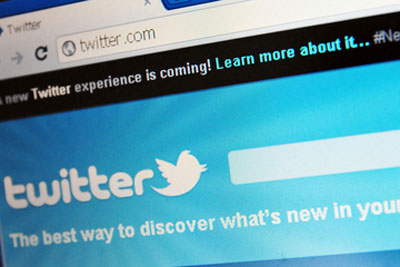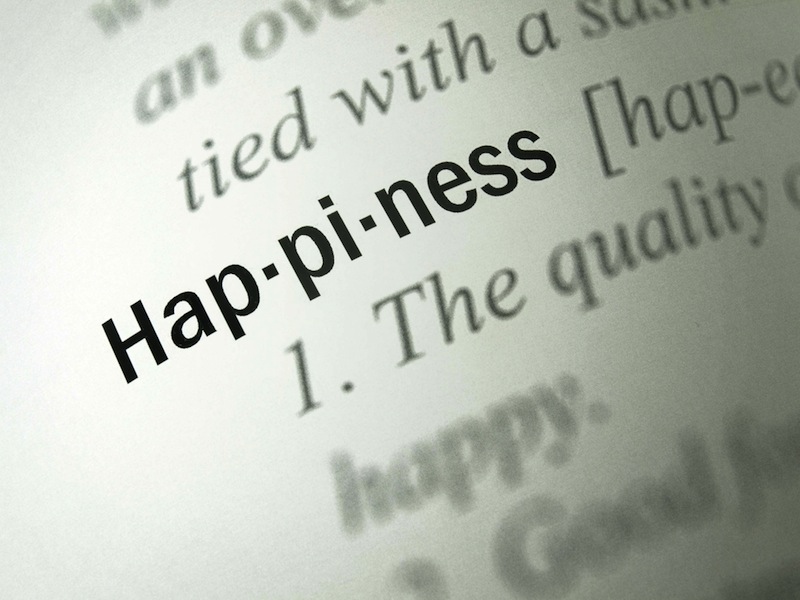5 Wacky Ways to Quantify Happiness
Quantifying Happy

If you're happy, you may know it, but measuring that joy tends to be tricky. Happiness is subjective, after all, and what makes one person beam may barely register for another person.
Scientists tackle this problem of measuring happiness in a number of ways, from asking people about their moment-to-moment moods to surveys on overall life satisfaction, health and other big-picture factors. Other attempts to investigate happiness get more creative — and sometimes quite odd.
Read on for some of the weirdest measurements of happiness ever taken. [7 Things That Will Make You Happy]
Happy Tweets

Social media users spill their hearts out online. So researchers at the University of Vermont took to Twitter to see if they could figure out the happiest places in the United States.
In a paper published in May 2013 in the open-access journal PLOS ONE, scientists looked at more than 80 million words typed in Tweets in 2011, all tagged with location information. By analyzing the positivity and negativity of words used, the researchers found the happiest state (or at least the state with the most chipper Twitter users) is Hawaii, followed by Maine, Nevada, Utah and Vermont. The saddest state was Louisiana, with Mississippi, Maryland, Delaware and Georgia rounding out the bottom five.
Facebook Feeling

If researchers are trolling Twitter for information on mood, you can bet they've also checked out social media giant Facebook. Much of the Facebook research on happiness has to do with how interacting with the site changes mood (results are mixed, but one March 2014 study provides some good news: Happy posts begat happy posts, that research found).
Facebook recently added the capability for users to include an emoticon and feeling to a status, allowing the company's Data Team to investigate how users' emotions are changing. On March 17, 2014, the team watched those emotions in response to daylight saving time. They found that complaints of tiredness rose 25 percent the Monday morning after the time shift compared with the week before. But Facebook users also saw a daylight saving mood boost: Usage of positive words like "wonderful" and "great" also rose by about 20 percent that Monday.
Get the world’s most fascinating discoveries delivered straight to your inbox.
Text statuses were also more positive that Monday evening, the Data Team reported, perhaps because of the extra hour of post-work sunlight.
Instagram Grins

Meanwhile, over at Instagram, Brazil is getting its due as the happiest country in the world, at least based on how many grins get archived on the social photo site.
The company Jetpac City Guides analyzed facial expressions on geo-tagged Instagram pics, scoring big grins higher than tight-lipped smiles. (No word on whether the smiles were genuine, or whether toothy grins are less culturally acceptable in some places than others.) Brazil brought home the highest smile score, while Japan and Vatican City tied for the lowest. In North America, Nicaragua scored as the cheeriest country, while the United States came in eighth, beating out only Canada and the Bahamas.
Gross National Happiness

Moving on from social media to social policy: The tiny country of Bhutan is a champion of measuring national progress not only through gross domestic product, as economists typically do. The Bhutanese government also tracks Gross National Happiness.
Bhutan has been keeping a close eye on its citizens' happiness since 1971. To do so, the government surveys citizens on their psychological well-being, health, education, living standards and time use. They also track cultural diversity, cultural resilience, quality of governance and community vitality as well as ecological diversity and resilience.
As of 2010, the most recent results available, 41 percent of Bhutanese are happy, and 59 percent are not up to their full happiness potential.
The History of Happiness

Another way to understand happiness might be to track it over time — deep time. Researchers the University of Virginia, reporting in a 2013 issue of the journal Personality and Social Psychology Bulletin, did just that. They analyzed definitions of happiness from 30 nations, including definitions in Webster's dictionaries from 1850 to modern times. The researchers also studied phrasing in State of the Union addresses starting in 1790, and tracked usage of the word "happiness" in books from 1800 to 2008 using Google's Ngram viewer.
The findings revealed that old definitions of happiness focused on good fortune and benevolent external conditions. Modern-day American usage, however, conceives happiness as an internal state.

Stephanie Pappas is a contributing writer for Live Science, covering topics ranging from geoscience to archaeology to the human brain and behavior. She was previously a senior writer for Live Science but is now a freelancer based in Denver, Colorado, and regularly contributes to Scientific American and The Monitor, the monthly magazine of the American Psychological Association. Stephanie received a bachelor's degree in psychology from the University of South Carolina and a graduate certificate in science communication from the University of California, Santa Cruz.


